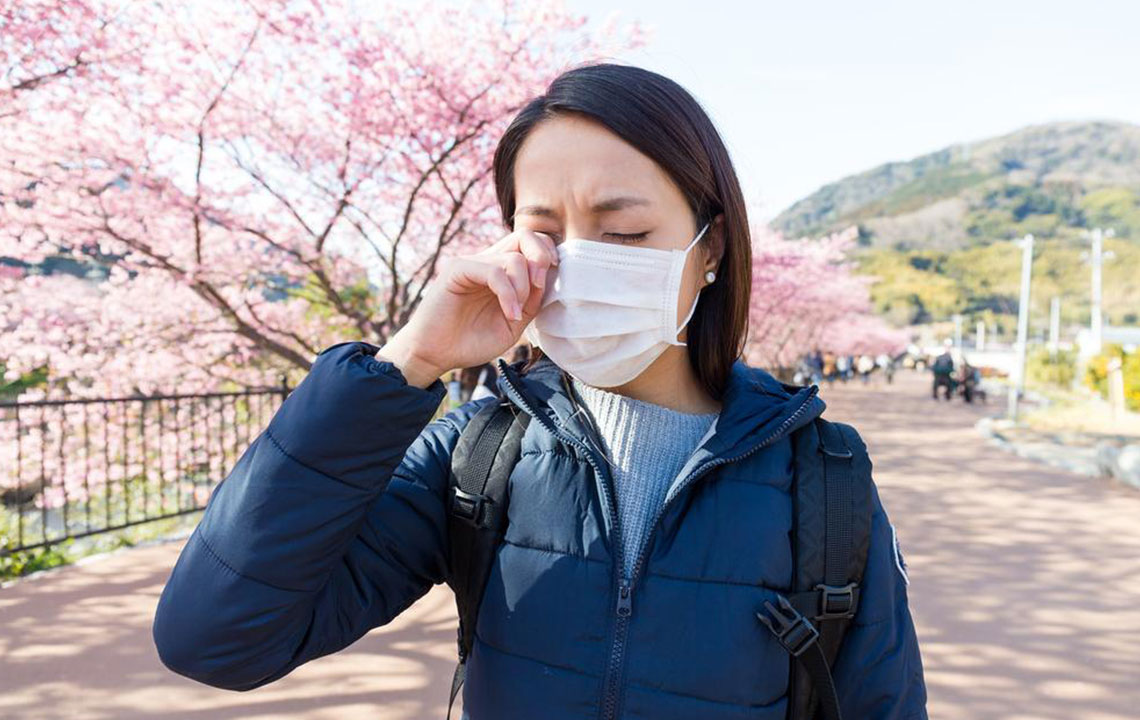Understanding the Symptoms of Pollen Allergy

The allergic reactions that are caused by the stamen of flowers are known as pollen allergy. The allergy is caused when the pollen disperses in the air. Due to its fine texture, it is easily transported by air currents. When you inhale pollen, or if it comes in contact with your nose, mouth, or nasal passages, you might get the allergy.
Causes of Pollen Allergies
Pollen allergies can occur due to different plant pollens that grow in various seasons. For example, if you experience pollen allergy in spring, it is due to the following plants:
- Oak
- Birch
- Hickory
- Pecan
- Grasses
If you fall sick due to pollen allergy in summer and fall, it is mostly because of ragweed. Pollen allergy targets your nasal passages and sinuses. You could feel irritations in your nose, respiratory tracts, and throat. A pollen allergy test will help you detect the right cause. It may be due to grass, plants, trees, or weed pollen. The different pollens exhibit variant pollen allergy symptoms. Once you visit your allergist, he might provide a clear idea on the type of allergy you suffer from. After knowing about the allergen, effective measures can be taken.
Understanding Pollen Count
In order to combat pollen allergy symptoms, it is important for you to know about the pollen count in your area. If you are living in a rain forest, the pollen usually gets washed to the ground, and so, chances are very low for allergies. The pollen count is high in dry and arid regions like deserts and plateaus.
You can subscribe to pollen count services and allergy forecast information. These services are accessible through the internet and smartphone applications. They provide a clear report on the pollen count in your area. Cities are termed high or low, with respect to the pollen count. The forecast gives a two-day report on pollen levels in the air. You can monitor the pollen count in your area and take preventive measures accordingly. This is one of the useful steps in combating pollen allergy symptoms.
Symptoms Of Pollen Allergy
Sometimes, pollen allergy symptoms can be confused with regular cold and sinus symptoms. You need to be vigilant to detect pollen allergy symptoms because if you neglect it, the individual will have to go through discomfort in the affected areas.
Pollen allergy symptoms also vary according to the location of your house. The geographical venue of your home could determine the allergy. Change in vegetation might lead to change in the type of pollen in the air. This could have alternate effects on the symptoms. Nasal congestion is one of the common Pollen allergy symptoms. You might have a thick mucus lining throughout your nasal tube. If you are suffering from nasal congestion for a prolonged period, you could be suffering pollen allergy.
Pollen allergy is most likely to affect your sinuses. The swelling of your sinuses can cause irritation and discomfort. Inflammation of your sinuses can often lead to facial pain. You can feel the swelling in your jaws and have difficulty in speech or chewing. Another very common pollen allergy symptom is a running nose. Nasal congestion can lead to mucus drips running through your nose. This causes a lot of irritation in your nose and can result in bruises in the nasal cavity.
Apart from affecting the nasal passage, pollen allergy symptoms can do damage to your eyes also. You could experience itchiness in the eyes, and they can become watery too. If you have constant itchiness and irritation in your eyes, you may be suffering from pollen allergy. A sore throat or an itchy throat is another pollen allergy symptom that you should keep in mind. Along with nasal congestion and running nose, you could experience itchy and sore throat. This is often caused due to the continuous nasal drips.
A sore throat leads to a cough, that becomes the next pollen allergy symptom. A prolonged sore and itchy throat can cause coughs. Coughing is caused due to irritation of your throat. It increases in the night, because of high nasal dripping. It is advisable to sleep on a higher pillow, to relieve yourself from coughs. If you are suffering from pollen allergy, you might have swollen eyes. The skin around your eyes could turn bluish in color. Continuous itching and irritation of the eyes can cause the swelling and discoloration.
If you are experiencing discomfort in your nasal tracts, your sense of smell and taste will be hampered. This is due to the blockage of your nose, eyes, and ear passages. If you have prolonged symptoms, ensure that you consult a doctor immediately before it worsens over a period of time.


